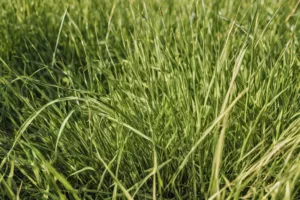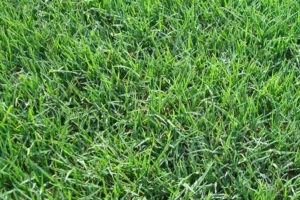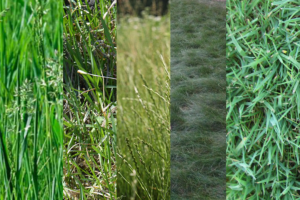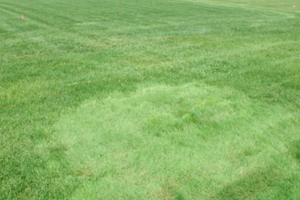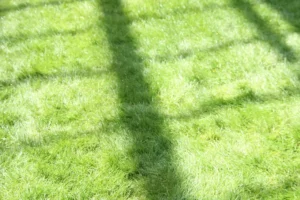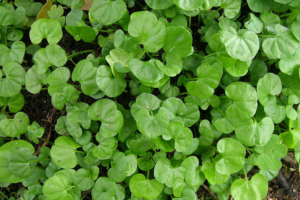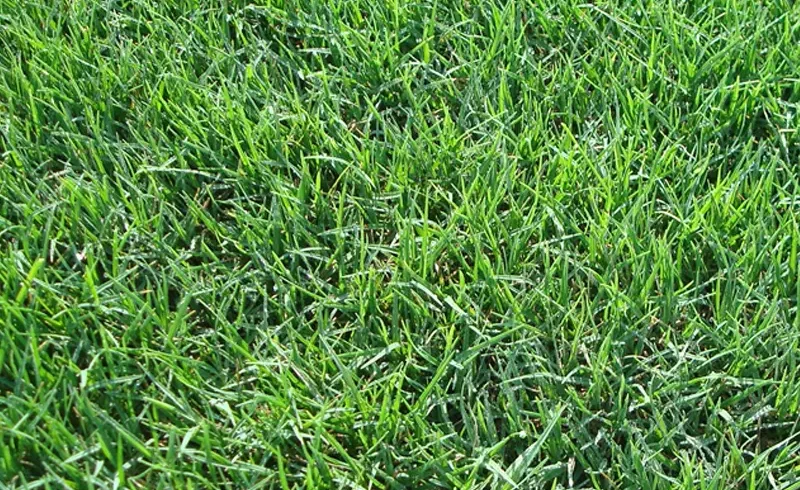
Understanding Bermuda Grass
Bermuda grass, scientifically known as Cynodon dactylon, is a warm-season, perennial grass species native to tropical and subtropical regions. It is known for its robust growth, resilience, and adaptability, making it popular worldwide for lawns, golf courses, sports fields, and pastures.
The Importance of Bermuda Grass
The significance of Bermuda grass extends beyond its aesthetic appeal. It plays a crucial role in preventing soil erosion, improving soil structure, and providing a habitat for various forms of wildlife. In agriculture, it is a valuable forage source for livestock due to its high nutritional content.
In the world of sports, Bermuda grass is highly prized for its ability to withstand heavy foot traffic and recover quickly from damage, making it an ideal choice for sports fields and golf courses.
However, despite its many benefits, Bermuda grass has its challenges. It can become invasive if not properly managed, and its aggressive growth can threaten local biodiversity.
In this comprehensive guide, we will delve deeper into the world of Bermuda grass, exploring its history, characteristics, benefits, cultivation methods, uses, and the challenges associated with its growth and management. Whether you’re a homeowner looking to beautify your lawn, a farmer seeking nutritious forage for your livestock, or a sports field manager searching for resilient turf, this guide will provide all the information you need about Bermuda grass.
History and Origin of Bermuda Grass
Tracing the Roots
Bermuda grass, or Cynodon dactylon, is believed to have originated in the Middle East, specifically in the region that is now Iran. Its hardiness and adaptability allowed it to spread across continents over centuries, reaching almost every corner of the world.
The Journey to the New World
The grass was introduced to North America by Spanish colonizers in the 1500s, who brought it from Bermuda—hence the common name, Bermuda grass. They recognized its potential as a pasture grass due to its high tolerance to drought and salinity and its ability to thrive in various soil types.
Spreading Across the Globe
From North America, Bermuda grass continued to spread, reaching South America, Australia, and various parts of Africa and Asia. Its ability to proliferate and withstand harsh conditions made it a popular choice for lawns, pastures, and erosion control.
The Birth of Cultivars
Over time, numerous cultivars of Bermuda grass have been developed to enhance certain desirable traits such as drought tolerance, disease resistance, and aesthetic appeal. These include famous varieties like ‘Tifway,’ ‘Sahara,’ and ‘Princess 77’, each with unique characteristics and advantages.
In the following sections, we will delve deeper into the characteristics of Bermuda grass, its benefits, and how to cultivate and maintain it effectively.
Characteristics of Bermuda Grass
Physical Description
Bermuda grass is a perennial, warm-season grass species. Its dense, mat-like growth pattern and distinctive grey-green color characterize it. The grass blades are short, usually about 1 to 2 inches long, and are rough on the upper surface. The stems can grow up to 18 inches tall and produce seed heads that contain tiny, wind-pollinated flowers.
Growth Habits and Life Cycle
Bermuda grass is known for its aggressive growth habit. It spreads rapidly through its rhizomes (underground stems) and stolons (above-ground stems), quickly covering large areas and recovering from damage. This grass enters a period of dormancy during the colder months and turns brown, but it quickly regains its vibrant green color with the return of warm weather.
Varieties and Cultivars
There are numerous varieties and cultivars of Bermuda grass, each with unique characteristics. Some are bred for their superior drought tolerance, others for their disease resistance, and some for their aesthetic appeal. Common varieties include ‘Tifway,’ known for its fine texture and high traffic tolerance, ‘Sahara,’ prized for its drought resistance and deep green color, and ‘Princess 77’, renowned for its dense growth and fine texture.
In the upcoming sections, we will explore the benefits of Bermuda grass, how to cultivate and maintain it, and its various uses in different sectors.
Benefits of Bermuda Grass
Environmental Benefits
Bermuda grass plays a significant role in the environment. Its dense, mat-like growth helps prevent soil erosion, making it ideal for stabilizing embankments and rehabilitating degraded lands. Its deep root system improves soil structure and promotes rainwater infiltration, reducing runoff and the risk of flooding.
Agricultural Benefits
In agriculture, Bermuda grass is a valuable resource. It serves as a high-quality forage for livestock, providing essential nutrients and promoting animal health. Its resilience to grazing pressure and ability to regrow rapidly make it a sustainable choice for pastures.
Recreational Benefits
Bermuda grass is a favorite for recreational areas, including golf courses and sports fields. Its ability to withstand heavy foot traffic, recover quickly from damage, and provide a smooth, even playing surface makes it ideal for these settings. Its aesthetic appeal also enhances the visual quality of landscapes and lawns.
Economic Benefits
The cultivation of Bermuda grass can also bring economic benefits. It requires less water and fewer fertilizers than other grass species, reducing maintenance costs. Additionally, its use in pastures can enhance livestock productivity, contributing to agricultural income.
In the following sections, we will delve into the cultivation and maintenance of Bermuda grass, its various uses, and the challenges associated with its growth and management.
Cultivation and Maintenance of Bermuda Grass
Ideal Growing Conditions
Bermuda grass thrives in warm climates and prefers full sun exposure. It can grow in various soil types but does best in well-draining soils with a pH between 5.8 and 7.0. While it has good drought tolerance, regular watering will promote healthier and more vigorous growth.
Planting Procedures
Bermuda grass can be established from seeds, sods, sprigs, or plugs. The best time to plant is during the late spring or early summer when soil temperatures are consistently above 65 degrees Fahrenheit. Before planting, the soil should be prepared by removing existing vegetation and tilling to 4 to 6 inches.
Care and Maintenance Tips
Once established, Bermuda grass requires regular mowing to maintain a 1 to 2 inches height. Overly tall grass can become thatchy and less attractive. Watering should be done deeply but infrequently to encourage deep-root growth. Fertilization should be based on soil test results, but generally, Bermuda grass benefits from a high-nitrogen fertilizer applied during the growing season.
Managing Diseases and Pests
Bermuda grass is susceptible to several diseases, including leaf spot, dollar spot, and spring dead spot. Regular monitoring, proper watering, and the use of fungicides can help manage these diseases. Common pests include white grubs, armyworms, and Bermuda grass mites, which can be controlled with appropriate pesticides.
In the following sections, we will explore the various uses of Bermuda grass and discuss the challenges and controversies surrounding its cultivation.
Uses of Bermuda Grass
Landscaping and Lawns
Bermuda grass is a popular choice for lawns and landscaping in warm climates due to its dense growth, vibrant green color, and resistance to heat and drought. Its ability to withstand heavy foot traffic makes it suitable for parks, playgrounds, and other recreational areas.
Agriculture and Animal Feed
Bermuda grass is highly valued in the agricultural sector for its pasture use. Its high nutritional content and palatability make it an excellent forage for livestock such as cattle, horses, and sheep. It’s also used in hay production due to its high yield and quality.
Erosion Control and Soil Conservation
Bermuda grass is often used for erosion control and soil conservation. Its dense, mat-like growth and deep root system helps stabilize soil and prevent erosion, making it ideal for use on slopes, embankments, and other areas prone to soil degradation.
Sports Fields and Golf Courses
Bermuda grass is the turf for many sports fields and golf courses. Its ability to quickly recover from damage, withstand heavy use, and provide a smooth, even playing surface makes it ideal for these applications.
In the following sections, we will discuss the challenges and controversies surrounding Bermuda grass and how they can be effectively managed.
Challenges and Controversies Surrounding Bermuda Grass
Invasive Nature and Impact on Biodiversity
Bermuda grass is known for its aggressive growth and ability to spread rapidly. While this can be advantageous in some settings, it poses a significant challenge. Bermuda grass can quickly take over lawns and gardens, outcompeting other plants for resources and becoming difficult to control.
Moreover, in natural ecosystems, Bermuda grass can threaten biodiversity. Its invasive nature can lead to the displacement of native plant species, disrupting local ecosystems and potentially leading to a decline in wildlife that depends on these native plants for food and habitat.
Legal Restrictions in Some Regions
Due to its invasive nature, the cultivation and distribution of Bermuda grass are restricted or even banned in some regions. These restrictions aim to protect local ecosystems and biodiversity from the potential negative impacts of Bermuda grass invasion.
For instance, selling or distributing Bermuda grass is illegal in certain parts of California. Violation of these regulations can result in hefty fines. Therefore, homeowners, landscapers, and farmers must be aware of and comply with local regulations regarding Bermuda grass.
Management and Control Methods
Managing and controlling Bermuda grass can be challenging due to its robust growth and resilience. Regular mowing can help keep Bermuda grass in check in lawns and gardens, but more is needed to control its spread entirely.
More aggressive control methods may be necessary in some cases. These can include using specific herbicides designed to target Bermuda grass or, in more extreme cases, complete soil removal and replacement. However, these methods can be labor-intensive, costly, and may have environmental implications.
In the following sections, we will present case studies that illustrate the successful use of Bermuda grass in various settings and the challenges faced and solutions implemented in managing Bermuda grass.
Case Studies
Turf Irrigation Water Quality
This case study from Oklahoma State University discusses the impact of water quality on the growth and health of Bermuda grass lawns. It provides valuable insights into the importance of proper irrigation practices in maintaining Bermuda grass. Read more
Evaluation of Bermuda Grass Removal Techniques
This research from Texas A&M University evaluates four different techniques for removing Bermuda grass. The findings can be helpful for homeowners and landscapers dealing with invasive Bermuda grass. Read more
Bermuda Grass in Agricultural Settings
This publication on ResearchGate provides an in-depth look at the use of Bermuda grass in agricultural settings, including its benefits as a forage crop and its impact on soil health. Read more
Bermuda Grass for Lawns
This article from the University of Florida provides a comprehensive guide on using Bermuda grass for lawns, including its cultivation, maintenance, and pest management. It serves as a practical case study for homeowners interested in Bermuda grass. Read more
Bermuda Grass for Erosion Control
This research from New Prairie Press discusses the use of Bermuda grass for erosion control. It provides valuable insights into the role of Bermuda grass in soil conservation and land rehabilitation. Read more
In the following section, we will explore the future of Bermuda grass, including ongoing research and potential uses yet to be explored.
The Future of Bermuda Grass
Lawns for a Hot, Dry Future
Researchers at Washington State University are testing different varieties of Bermuda grass to withstand hot and dry conditions. This research is crucial in the face of climate change, as it could help identify varieties that can thrive in increasingly arid conditions, reducing the need for water-intensive lawn care. Read more
Genetic Improvement of Bermuda Grass
Scientific advancements are paving the way for the genetic improvement of Bermuda grass. Researchers use genetic sequencing and molecular breeding techniques to develop new varieties of Bermuda grass with enhanced traits, such as improved drought tolerance, disease resistance, and nutritional quality. Read more
Potential Uses Yet to Be Explored
There is ongoing research into potential new uses for Bermuda grass. For example, it is being explored as a potential source of bioenergy due to its high biomass yield. Additionally, its ability to sequester carbon and mitigate greenhouse gas emissions is also being studied, which could have significant implications for climate change mitigation. Read more
The future of Bermuda grass looks promising, with ongoing research and development likely to lead to new varieties and uses that could further enhance its value in various sectors.
Conclusion
With its robust growth, resilience, and adaptability, Bermuda grass has proven to be a valuable resource in various sectors, from landscaping and agriculture to sports and environmental conservation. Its numerous benefits include preventing soil erosion and providing high-quality forage for livestock to create beautiful lawns and durable sports fields.
However, the cultivation and management of Bermuda grass are not without challenges. Its invasive nature can threaten local biodiversity, and its management can be labor-intensive and complex. Therefore, it’s crucial to approach its cultivation with knowledge and responsibility.
The future of Bermuda grass looks promising. Ongoing research and development will likely lead to new varieties with enhanced traits and potential new uses that could further increase their value. As we face a future impacted by climate change, the resilience and versatility of Bermuda grass could make it an even more critical resource in the years to come.
In this comprehensive guide, we have explored the world of Bermuda grass, from its history and characteristics to its uses, benefits, and challenges. This information will be a valuable resource for homeowners, landscapers, farmers, and anyone interested in this remarkable grass species.

Bob Green, a passionate lawn care enthusiast with over two decades of landscaping experience, is this website’s proud owner. His vast knowledge of horticulture and dedication to helping homeowners maintain beautiful lawns are reflected in the valuable content he shares on his platform. John has always been interested in Agrostology.









